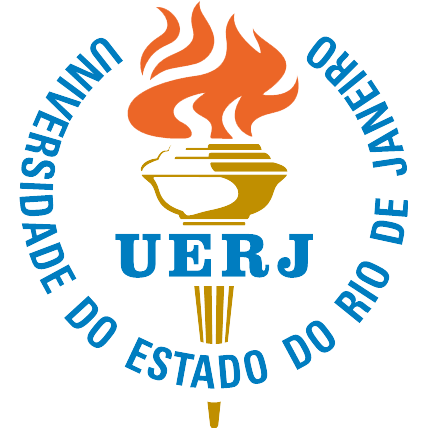Perfil sociodemográfico da adolescente em situação de rua: análise das condições socioculturais [Socio-demographic profile of female adolescents in a street situation: analysis of sociocultural conditions]
DOI:
https://doi.org/10.12957/reuerj.2017.29603Keywords:
Jovens em situação de rua, Saúde da mulher, Representações sociais, Enfermagem em saúde públicaAbstract
Objetivo: analisar o perfil sócio-econômico-demográfico de mulheres adolescentes em situação de rua, na perspectiva das condições socioculturais. Metodologia: pesquisa quantitativa com 21 mulheres adolescentes com experiência de viver na rua, acolhidas em duas unidades da rede municipal de acolhimento do Rio de Janeiro. Os dados foram produzidos a partir de entrevistas contendo questões objetivas de caracterização do perfil sócio-econômico-demográfico, e submetidos à análise estatística com cálculos de frequência absoluta e percentual. Resultados: maioria das adolescentes é preta/parda; apresenta baixa escolaridade; proveniente de comunidades pobres; seus responsáveis têm baixa escolaridade, desemprego/subemprego ou envolvimento com ilegalidade/criminalidade; maioria afastada do convívio familiar há mais de 1 ano com sucessivas passagens pelo acolhimento institucional. Conclusão: dados refletem as raízes históricas do grupo, com reprodução do padrão parental, ressaltando a precariedade intergeracional. A longa história de afastamento do convívio familiar indica a dimensão do esgarçamento dos laços familiares, fornecendo indícios das precariedades econômicas e psicoafetivas e da necessidade de intervenções preventivas.
ABSTRACT
Objectives: to analyze the social, economic and demographic profile of female adolescents in a street situation, from the standpoint of socio-cultural conditions. Methodology: this quantitative study of 21 adolescent women with experience of living on the street, in care at two of Rio de Janeiro’s municipal shelters. Data were produced from interviews with objective questions to characterize a social, economic and demographic profile, and were subjected to statistical analysis by calculating absolute and percentage frequencies. Results: most of the adolescents were black or brown, had little schooling, and were from poor communities; most had lived away from their families for more than one year and had been institutionalized several times; their guardians had little schooling, and were un- or under-employed or involved in illegal or criminal activities. Conclusion: the data reflect the group’s historical roots and its reproduction of parental patterns, and highlight the intergenerational precarity. The long histories of removal from the family indicate the extent to which family ties are fragmentary, and evidence precarious economic and psycho-affective conditions and the need for preventive interventions.
RESUMEN
Objetivos: analizar el perfil socioeconómico-demográfico de chicas adolescentes en situación de calle, en la perspectiva de las condiciones socioculturales. Metodología: investigación cuantitativa con 21 adolescentes del sexo femenino con experiencia de vivir en la calle, recibidas en dos unidades de acogida de la red municipal de Río de Janeiro. Los datos fueron producidos a partir de entrevistas con preguntas objetivas de caracterización del perfil socioeconómico-demográfico y sometidos al análisis estadístico con cálculos de frecuencia absoluta y porcentual. Resultados: la mayoría de las adolescentes son negras/pardas; tienen baja escolaridad; proceden de comunidades pobres; sus responsables tienen baja escolaridad, desempleo/subempleo o implicación con ilegalidad/ criminalidad; la mayoría está alejada de la convivencia familiar desde hace más de un año con sucesivos pasos por instituciones de acogida. Conclusión: los datos reflejan las raíces históricas del grupo, resaltando la precariedad intergeneracional. La larga historia de alejamiento de la convivencia familiar indica cómo se desgastan los lazos familiares, mostrando indicios de las precariedades económicas y psicoafectivas y de la necesidad de intervenciones preventivas.
DOI: http://dx.doi.org/10.12957/reuerj.2017.29603
Published
How to Cite
Issue
Section
License
When publishing in Revista Enfermagem UERJ, the authors declare that the work is their exclusive authorship and therefore assume full responsibility for its content.
Authors retain copyright to their article and agree to license their work using a Creative Commons Attribution International Public License (CC BY), thereby accepting the terms and conditions of this license (https://creativecommons.org/licenses/by/4.0/legalcode.en), which allows material created by the author to be distributed, copied and displayed by third parties. The original work must be cited and present a link to the article available on the website of the journal in which it was published.
The Copyright of the articles published in Revista Enfermagem UERJ belongs to their respective author(s), with the rights of first publication assigned to Revista Enfermagem UERJ, with the work simultaneously licensed under a Creative Commons License CC BY, which allows sharing of work with recognition of authorship and initial publication in this journal.
The authors grant Revista Enfermagem UERJ the right of first publication, to identify themselves as the original publisher of the work and grant the magazine a license of non-exclusive rights to use the work in the following ways:
- Sell and/or distribute the work in printed copies and/or electronic format;
- Distribute parts and/or the work as a whole with the aim of promoting the magazine through the internet and other digital and printed media;
- Record and playback work in any format, including digital media.
In line with the journal's policies, each published article will be assigned a Creative Commons Attribution (CC BY) license.









